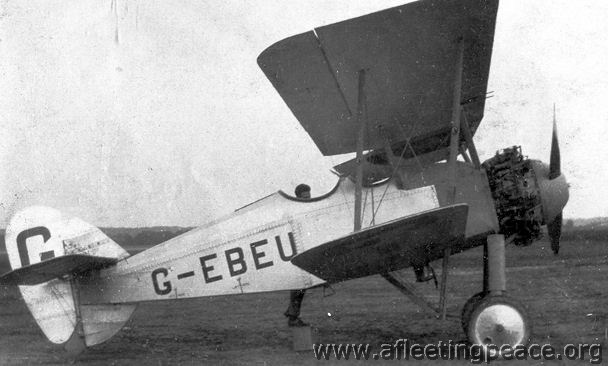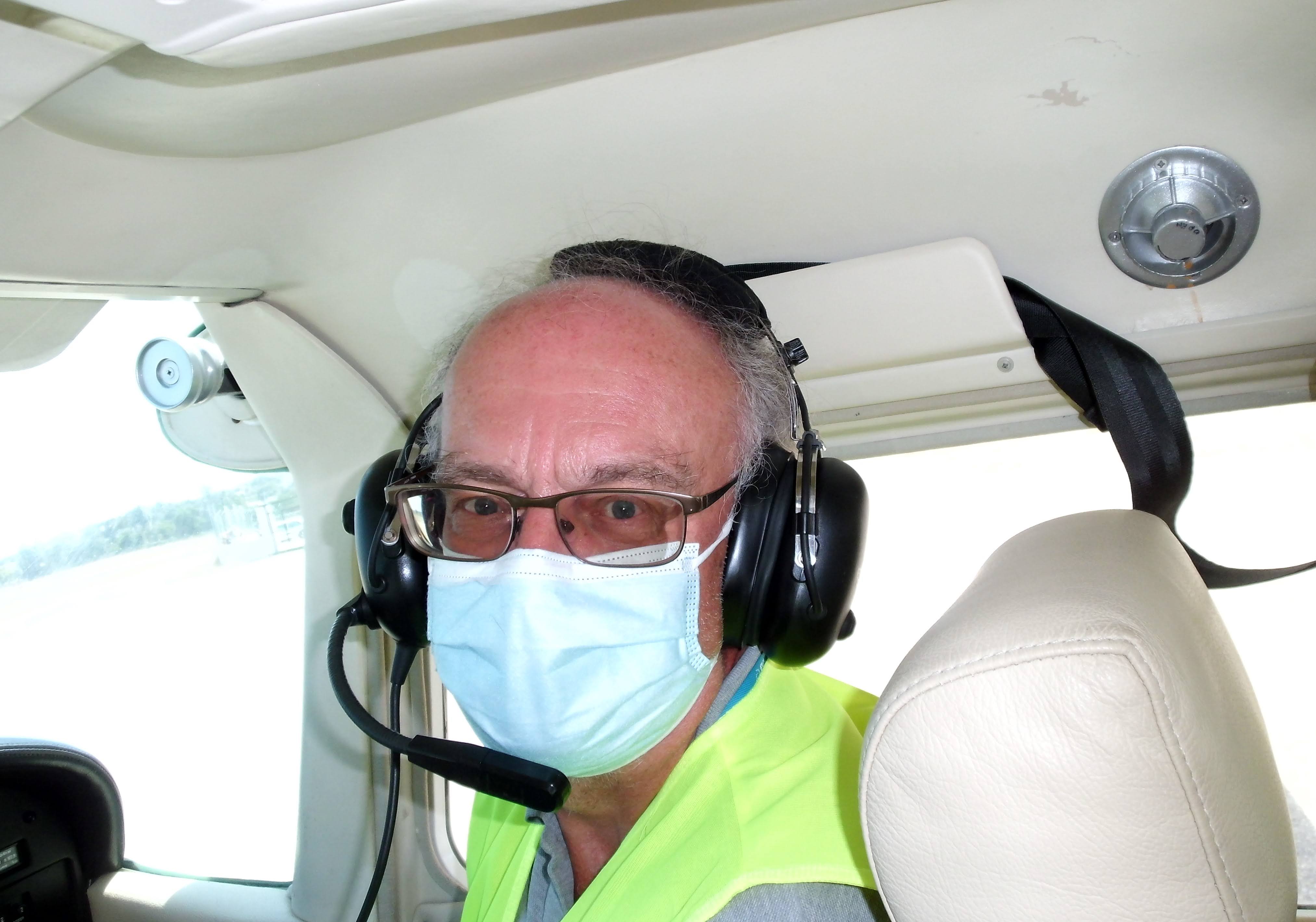King's Cup - 1922
All Aviators who took part in the 1922 King's Cup Race
- click on aviator's name for full biography
-
-King's Cup - 1922
-
-The Aviators
The Aviators
-
Barnard, Franklyn Leslie
Capt Franklyn Leslie Barnard OBE AFC
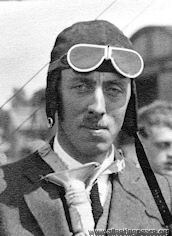 photo: 1925, aged 29
photo: 1925, aged 29 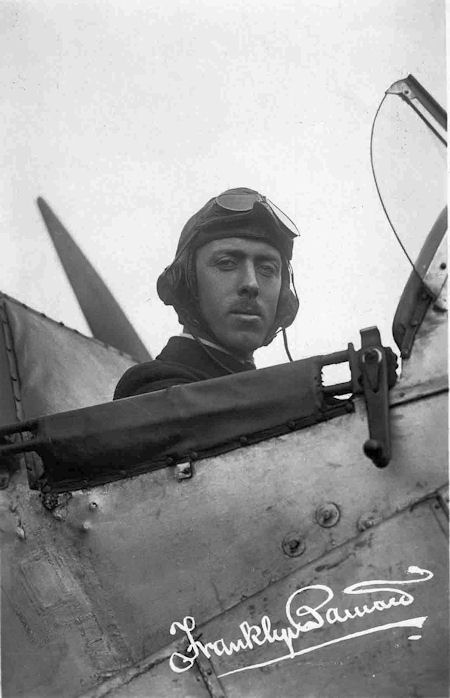
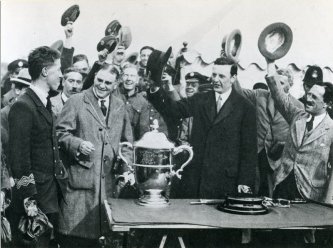
Winner of the first King's Cup in 1922. "an exceptional pilot - careful, skilful, and daring" and "his ability as an engineer was fully equal to his skill as a pilot".
b. 1896; his father, Owen Barnard, was a stockbroker's clerk (and not related to Charles Barnard's father).
AFC in WWI; chief pilot for Instone (later) Imperial Airways. OBE in 1927.
Killed in July 1927 while testing propellers for the Bristol Badminton which he had entered for the King's Cup Race, which crashed at Filton after the engine seized. Major Beaumont, appearing for Imperial Airways at the inquest, said the company felt it had "lost one of the world's magnificent airmen".
1927
It is with profound regret that we have to record the death, as the result of a flying accident on Thursday, July 28, of Capt. F. L. Barnard.
Capt. Barnard—one of our mostexperienced and popular pilots—was carrying out a test flight on the Bristol " Badminton " ("Jupiter VI ") biplane, which had been entered for the King's Cup Air Race, at Filton aerodrome, when, according to eyewitnesses, the engine suddenly stopped and the machine crashed to the ground just outside the 'drome from a height of about 200 ft. When a number of people who had been watching the flight arrived in the field where the machine had crashed, the latter was found completely wrecked, with the engine embedded in the ground, and the unfortunate pilot lying in the cockpit beyond human aid.
From evidence at the inquest, which was held on July 29, it appears that when Capt. Barnard's engine failed, he put the machine into normal gliding angle and attempted to land. While manoeuvring to do so, the machine lost flying speed and stalled from about 80 ft. Capt. Barnard had already made three other test flights on the machine, trying out different airscrews.
Capt. Barnard's loss to the aviation world is a great one indeed, for he was an exceptional pilot, careful, skilful, and daring—but daring only when flying alone or testing. He served in the Air Force during the war, and was awarded the Air Force Cross. Following the Armistice he was pilot to No. 24 Communication Squadron, when he carried many distinguished personages to and from the Continent. He then became associated with Instone Air Lines, and later, when Imperial Airways was formed, was their chief pilot.
His skill as a pilot was such that he was entrusted with many important aerial missions—the most conspicuous of which was the piloting of the Imperial Airways D.H. "Hercules" air liner, carrying Sir Samuel Hoare, Lady Maud Hoare and party from London to Cairo on the inaugural flight of the Egypt-India service. He also, it will be remembered, took part in previous King's Cup races, being the winner in1922 and 1925, and flying last year the Bristol " Badminton "in its original form.
Capt. Barnard leaves a widow and young son, to whom, in common with his many, many friends, we offer our deepest sympathy." - 'Flight'
-
Biard, Henri Charles Amedie de la Faye
Capt Henri Charles Amedie de la Faye Biard
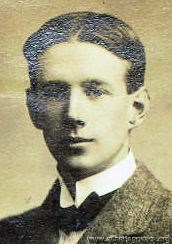 1912, aged 20
1912, aged 20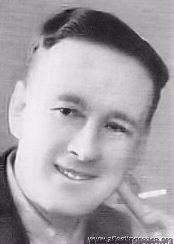 c.1934, aged 42.
c.1934, aged 42.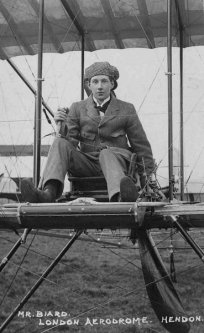
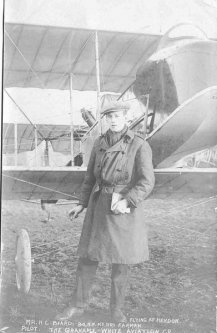
From Jersey; a very early flier, test pilot for Supermarine.
Schneider Trophy pilot in 1922, 23 and 25 (during which he crashed, "making a huge hole in the sea", but emerged merely slightly dazed).
His autobiography is called, er, 'Wings' (1934).
-
Broome, Frank Crossley Griffiths
Capt Frank Crossley Griffiths Broome  photo: 1917, when a Lieutenant in the Army Service Corps, aged 25
photo: 1917, when a Lieutenant in the Army Service Corps, aged 25Vickers test pilot - he and Stanley Cockerell (q.v.) were known as the 'Heavenly Twins'; Frank served under Stanley in WWI; when Frank married Miss Ismay Lermitte in Colchester in 1920, Capt. S. Cockerell, A.F.C., was best man. He and CJQ Brand were in the same squadron in WWI.
In 1920 the Heavenly Twins were the pilots of the attempt, organised by The Times, to make the first flight from Cairo to the Cape. The Vimy Commercial aeroplane left Brooklands on January 24 but crashed at Tabora [Tanganyika] on February 27. They finally reached the Cape "after a series of undeserved misfortunes".
Frank Crossley Griffiths Broome - born in London (St Pancras) in 1892. He enlisted in the Army Service Corps. Won DFC, and AFC.Youngest son of Frank Broome, and lived at Winterbourne, Weybridge.He married Ismay Lermitte, daughter of Lt Col Lermitte (deceased) of Woodhouse, Great Horkesley at All Saints Church on August 17th 1920.At the wedding ceremony, the cake was adorned with the silver Vickers Vimy, which had been presented to him by The Times newspaper, to commemorate his 1920 Africa flight (in Silver Queen II) The purpose was to test the feasibility of the Cape to Cairo route, and was sponsored by the newspaper. The plane crashed, and it sounds as though the expedition was an arduous one.
Later the same crew of Captain Cockerell, Captain Broome and ex Sgt Major James Wyatt crashed in a seaplane in March 15th 1922, about four miles from Hastings.
Broome also flew with 112 Sqn, based at Throwley. On the night of 19/20 May 1918, he was one of dozens of pilots that took off against a wave of Gothas and Giants which attacked the UK. Broome didn't see them, but fellow sqn pilot CJQ Brand bagged a Gotha that night. -
Butler, Alan Samuel
Mr Alan Samuel Butler J.P. 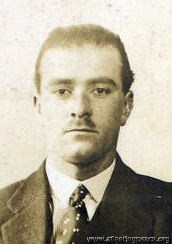
photo: 1921, aged 23
Chairman of de Havilland; the story goes that in 1921 he asked the one-year old de Havilland Aircraft Company to build a fast two-passenger touring aeroplane to his specification,
and stumped up £3,000 for them to do it. The money saved the company from extinction and they appointed him to the board of directors forthwith. He held the position until he retired in 1950.
The aeroplane became the DH37, (which he named, firstly, 'Sylvia' after his sister, then, rather diplomatically, 'Lois', after his wife, q.v.), which he entered in the very first King's Cup Race in 1922 and again in 1924, coming third.
He and Lois set up a world speed record of 120mph for 1000 km in 1928, and they also flew to Cape Town together .
Entered the MacRobertson Race in 1934 (assigned No 59) but didn't take part.
Was still aviating in 1970.
-
Carr, Charles Roderick
Sir Charles Roderick Carr KBE CB DFC AFC
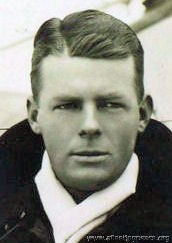
photo: 1916, when a Flight Sub-Lieut. in the Royal Navy, aged 25
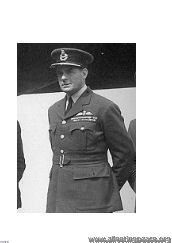
photo: 1947, aged 56
Born Feilding, New Zealand.
Part of Shackleton's last Antarctic expedition in 1921, later Air Marshall RAF and Chief of the Indian Air Force.
-
Cobham, Alan John
Mr (Sir) Alan John Cobham KBE AFC
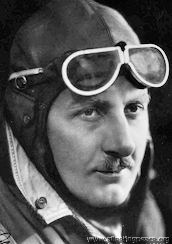 in c.1934, aged c.40
in c.1934, aged c.40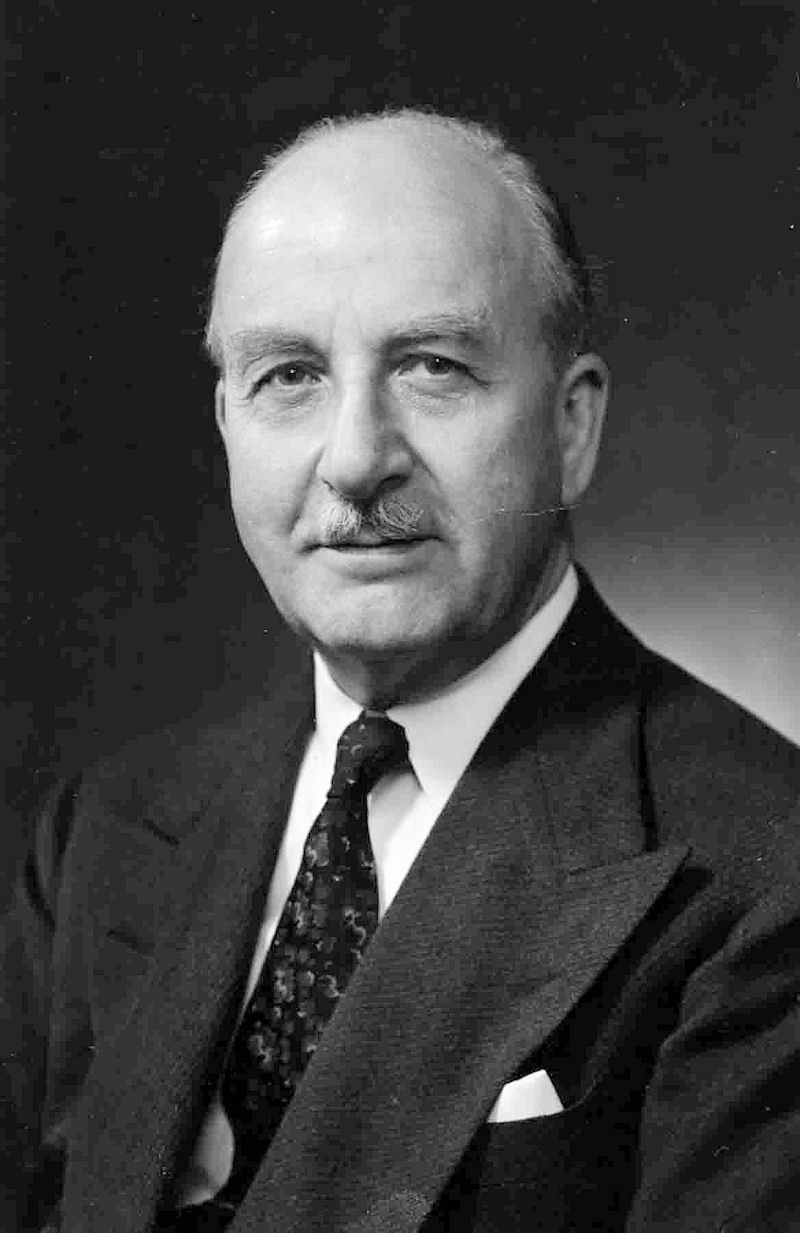
-
Cockerell, Stanley
Capt Stanley Cockerell AFC, Croix de Guerre (Belgium) 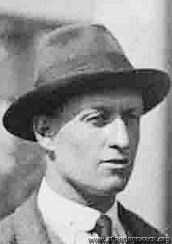
photo: 1930, aged 33
b. 9 Feb 1895, the 'willowy' Vickers chief test pilot - he and his assistant Frank Broome (q.v.) were known as the 'Heavenly Twins'.
RFC in WWI (7 victories).
Married Miss Lorna Lockyer in 1921.
Killed in WWII: on the 29th November 1940, when the Running Horse(s?) Pub in Erith was bombed.
His 6-year-old daughter Kathleen also died and they were buried at the church of Saint Mary, Sunbury on Thames.
Lorna also died during the Blitz. Some children survived and were split up and most were adopted, losing touch with each other.
-
Courtney, Frank Thomas
Capt Frank Thomas Courtney
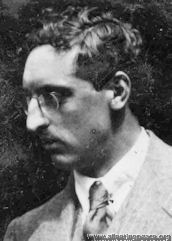
 photo: 1972, holding the King's Cup at the RAF Museum, Hendon, aged 78
photo: 1972, holding the King's Cup at the RAF Museum, Hendon, aged 78An Irishman and early aviator; he test-flew the prototype D.H.18 - de Havilland's first purpose-designed airliner - in March 1920 and often flew it in service. Also flew in the 1929 Cleveland National Air Races. Also flew the Cierva autogyro in 1925, (but not in the King's Cup)
-
Foot, Ernest Leslie
Lt Ernest Leslie Foot MC 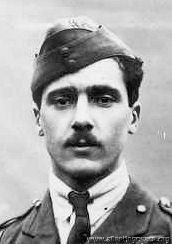
photo: 1915, aged 20
b. 19 May 1895 in Pulborough, Sussex
WWI ace (5 victories), awarded the Military Cross for 'conspicuous skill and gallantry'.
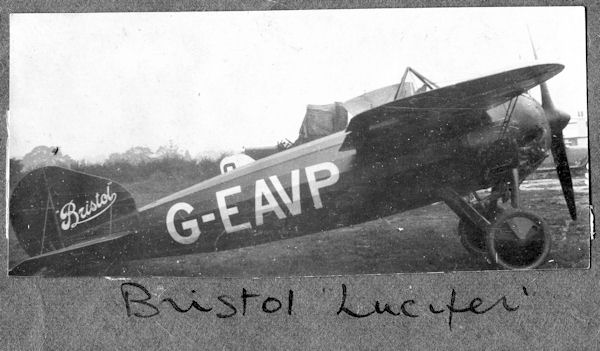
d. 23 June 1923 when the Bristol M.1D G-EAVP (which flew in both the Aerial Derby and the King's Cup in 1922) lost a wing and crashed near Chertsey.
-
Grey, Spenser Douglas Adair
Lt-Col Spenser Douglas Adair Grey 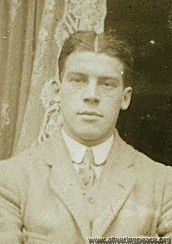
photo: 1911, when a Lieut in the Royal Navy, aged 22
born in Rio de Janeiro; later a Wing Commander; DSM, Order of Leopold of Belgium, Croix de Guerre.
Died in 1937
-
Haig, Rollo Amyatt Wolseley de Haga
Mr Rollo Amyatt Wolseley de Haga Haig AFC 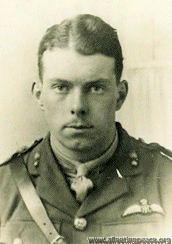 1916, when a captain in the Royal Gloucester Regt, aged 22
1916, when a captain in the Royal Gloucester Regt, aged 22 -
Hamilton, Leslie
F/O Leslie Hamilton 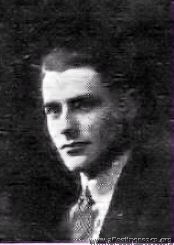
A stunt pilot known as the 'Flying Gypsy'; RAF in WWI (6 victories in Greece) who was Princess Anne Lowenstein-Wortheim's pilot after the war.
He and his friends piled into his Vickers Viking flying-boat G-EBED in 1927 (the same year it was written off, btw) to fly from the Swiss Winter Sports' Season to spend a holiday on the French Riviera." - see the video here: By Air To Anywhere - British Pathé (britishpathe.com)
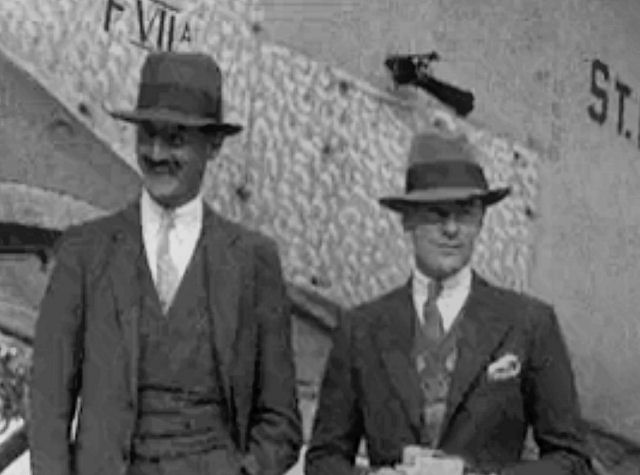
They, together with Fred Minchin (left), were killed when trying to cross the Atlantic from East to West in 1927.
For a video of them and the aeroplane, see the middle bit here: Old Flying Stories - British Pathé (britishpathe.com)
[The rest of it shows Walter Hinchliffe's preparations for a planned similar flight with Charles Levine (qv)].
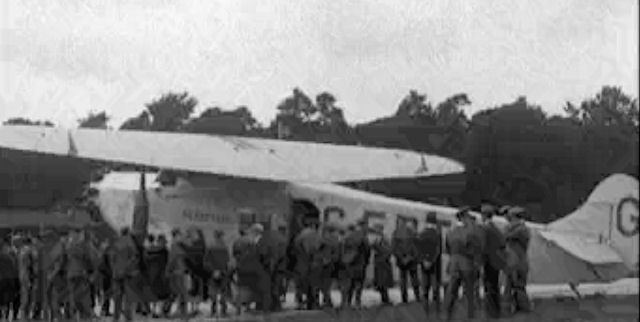
-
Hinkler, Herbert John Louis
Sqn Ldr Herbert John Louis Hinkler 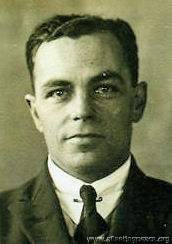
photo: 1927, aged 35
Australian 'Lone Eagle', aviation pioneer, killed in a crash in Italy in 1933
-
Holmes, Cyril Thomas
Flt-Lt Cyril Thomas Holmes 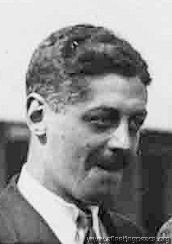 1930
1930b. 17 April 1895
Father: Rev. William Perowne Holmes
Joined the 2nd Royal Warwickshire Regiment as a 2nd-Lt and fought in France from 24 Dec 1914. Wounded. Later a Captain in the RFC and then Flt-Lt in the RAF.
8 Sep 1922:
"Great Flying Competition
MR. CYRIL T HOLMES ONE OF THE ENTRANTS.
'The circuit of Britain for the King's Cup starts at Croydon today (Friday) and gets to Birmingham, Newcastle and Glasgow, where a stop will be made for the night, and on Saturday via Manchester and Bristol, finishing at Coydon between four and six. The first machine will leave Croydon at 9 am today, and the rest will start off according to their handicap times. The first machine will be an Avro 'Baby' and the scratch machine is a Supermarine 'Sea Lion II' with a Napier engine. There are in all 23 entries, of which one third are of de Havilland design.
An item of interest to local residents concerns entry number 6, that of Brigadier-General James G Weir, CMG. It is a Boulton and Paul 'P.9', 90hp RAF engine, flown by Mr C T Holmes. The P.9 is a small two seater touring machine designed after the war, especially as a cheap form of air run-about.
Mr Cyril Holmes is a well-known cross-Channel pilot now with the Instone Line. He was at one time with the old Airco Service. He was wounded in the infantry early in the war and joined the RFC in 1916. Serving overseas at the end of the war, he was running the RAF Air Mail service to Cologne.
He is a son of the Rev. W P Holmes, formerly vicar of St Bartholomew's, Christ Church," - Sydenham, Forest Hill & Penge Gazette
m. 1 Jun 1935 in Stoke Bishop, Bristol, Edith Mary [Talbot]
In 1939, he was Chief Ground Flying Instructor for the Bristol Flying School.
d. Oct 1972 - Bath, Somerset
"Test pilot Mr Cyril Thomas Holmes, of Cherry Cottage, North Street. Norton St Philip, who died in Lansdown Nursing Home, Bath, on Wednesday last week at the age of 77, was a pioneer in aviation and had flown as a pilot on many types of aircraft for over 40 years.
Born in April. 1895, and educated at Eastbourne College. his long association with aviation began in 1916 when he was seconded from the Royal Warwickshire Regiment to the Royal Flying Corps. in which he served for the remainder of the war.
After the war he was an airline pilot from 1920 to 1923 with Aircraft Transport and Travel Ltd., KLM (the Dutch airline) and Instone Air Line. He flew in the first King's Cup race in 1922 and received a silver tankard for completing the course. In 1923 he Joined the Bristol Aeroplane Company as a test pilot and later became instructor and manager of the flying school, retiring in October 1959.
He was a member of Bristol City Council from June 1960 to May 1964, representing the Westbury ward. Mr Holmes and his wife moved to Norton St Philip from Westbury-on- Trym in 1964. He had been a churchwarden at St Mary's, Henbury, Bristol, for about three years and soon after moving to Norton St Philip he was appointed to a similar office in the parish church in which he gave devoted service for some years. He was for several years secretary to the Norton St Philip branch of the Wells Division Conservative Association and he also took a keen interest in all matters appertaining to the welfare of the local community.
Mr Holmes leaves a widow and a son and daughter." - Somerset Standard
-
Kenworthy, Reginald Watson
Mr Reginald Watson Kenworthy 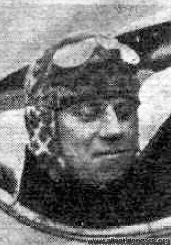
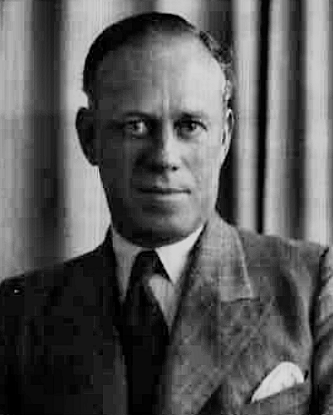 1938
1938An aeronautical Engineer from Yorkshire, b. 1892. RAeC Certificates 1222 (1915) and 15944 (1938). Test pilot for Blackburn until 1925.
Schneider Trophy pilot in 1923 in the Blackburn 'Pellet'; he had a lucky escape when during take-off "The starboard wing tip float touched, and the machine turned over on its nose and sank. For what seemed a very long time there was no sign of the pilot, and fears were entertained that he had not been able to extricate himself. Suddenly, however, he appeared, bobbing up like a cork, and climbing on top of the wreck was picked up by one of the many motor launches which sped to his assistance as soon as the crash occurred. He promptly fainted on getting safely on to the wreckage, but was soon revived and brought back to his hotel, nursed by Mrs. Kenworthy, who. was in the motor launch Vivid which was among those standing by. He had had quite a marvellous escape, and seemed none the worse for his experience. It was stated that someone actually timed Kenworthy, who was said to have been under water for 61 seconds. He later related how, when the machine turned turtle, he found himself inside the cockpit with his head on the floor and his feet pointing towards the cockpit opening, which he could dimly see. Holding his nose with one hand he wriggled free and shot to the surface."
-
Longton, Walter Hunt
Flt-Lt (later Sqn-Ldr) Walter Hunt Longton 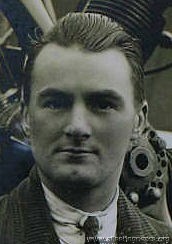 1916, aged 24
1916, aged 24'Scruffie' Longton, from Lancashire. 11 victories in WWI flying SE5s; DFC and bar.
Well known pre-war motor-cycling, and post-war aeroplane racer; whilst practising for the Bournemouth Air Meeting in April 1927, his aeroplane was hit by "one or two charges of shot from a sporting gun", possibly in protest at flying races on a Good Friday. A reward of £25 was offered for the detection of the culprit.
He was killed soon after - June 1927 - in a mid-air collision at the Bournemouth Whitsun Meeting, flying the prototype Bluebird.
"Every aircraft constructor knew that 'Longton's opinion' was worth having on anything new." C G Grey
-
Muir, A F
Capt A F Muir 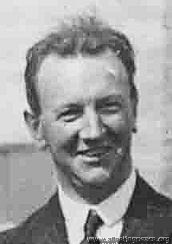 1930
1930?? -
Payn, Harold James
Sqn-Ldr Harold James Payn 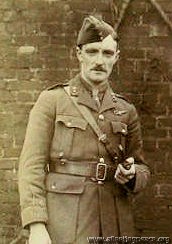 1916, when a Lieutenant in the Royal Engineers, aged 29
1916, when a Lieutenant in the Royal Engineers, aged 29Test pilot for the Air Ministry; AFC 1923
Page 1 of 2







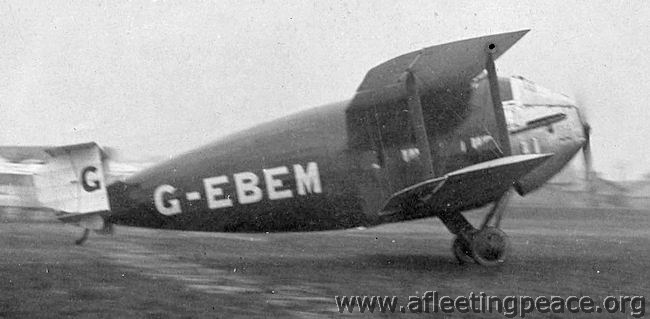



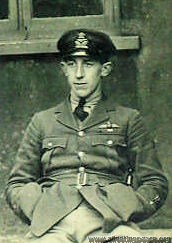

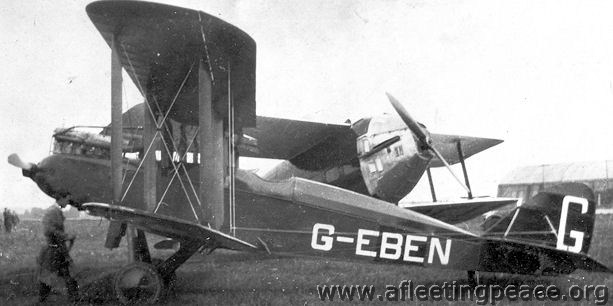
.jpg)


